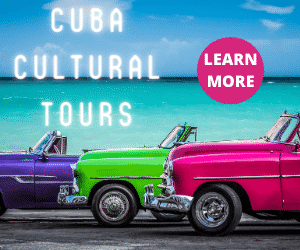Cuba’s UNESCO World Heritage sites are as naturally and culturally diverse as the country itself.
It’s home to nine world heritage sites — and it’s no wonder.
To get on the world heritage list, a site must, “be of outstanding universal value, demonstrating international significance; it must ‘transcend national boundaries and be of common importance for present and future generations of all humanity.’”
Cuba has managed to preserve its history, culture, and ambiance over the years.
This Cuba guide helps to explore Cuba and includes all nine world heritage sites as well as information about their social, cultural, and natural relevance. The best part is that many of these sites are a mere day trip from Havana.
Cuba UNESCO World Heritage Sites
Table of Contents
ToggleOld Havana and Its Fortification System
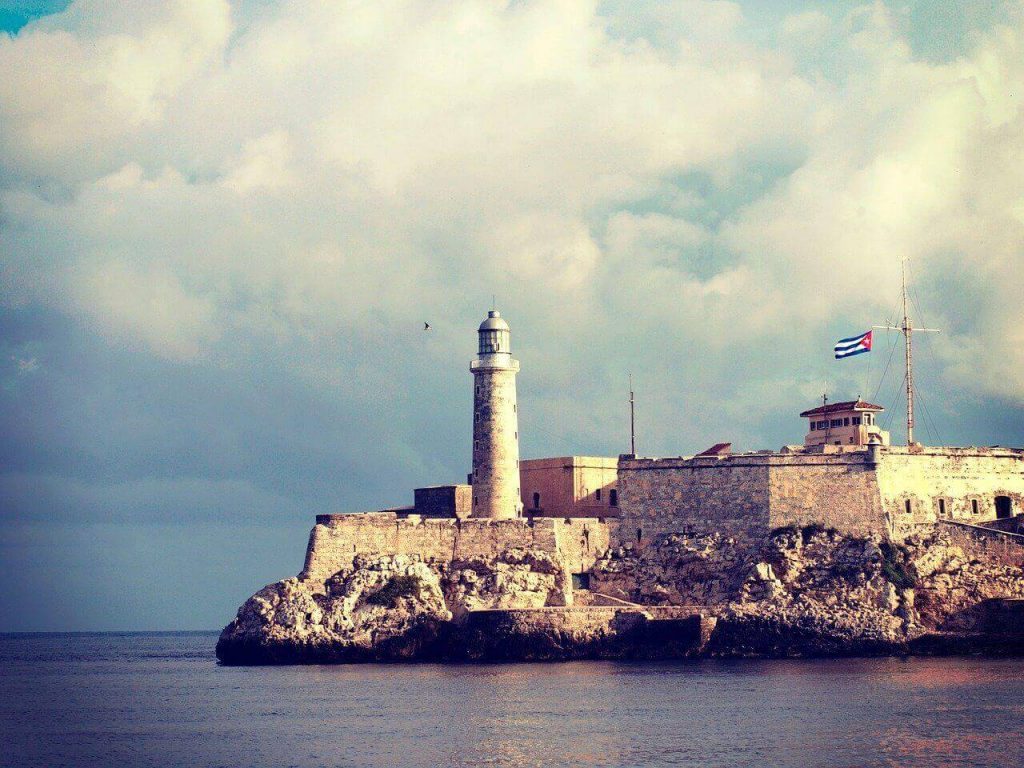
Year of inscription: 1982
Old Havana was founded around 1519 and is the oldest of Cuba’s UNESCO World Heritage sites.
It is one of the most impressive historical city centers in the Americas — especially in the Caribbean- and one of the top Cuba highlights.
The historic center hasn’t changed much in hundreds of years (Cuba is known for its historic ambiance and character as a whole).
Once the largest port in its region, Havana is still home to an impressive network of dockyards and defensive installations.
Old Havana was once surrounded by a fortification system that encircled the neighborhood.
The wall that surrounded the neighborhood no longer exists, although you can still see remnants scattered about the city.
The Castillo de la Real Fuerza (one of the oldest fortifications in the Americas), Castillo de San Salvador de la Punta, Castillo de los Tres Reyes del Morro, and 12 additional fortifications still stand, and are some of the most interesting things to see in Cuba.
Old Havana (Habana Vieja) has four main plazas:
Plaza de la Catedral, Plaza de San Francisco, Plaza Vieja and Plaza de Armas. They are still intact today. Visiting these plazas is one of the best things to do in Havana. Important buildings in these plazas include:
Catedral de La Habana (Havana Cathedral.) Nestled in the Plaza de la Catedral, perhaps the most iconic plaza in the city, is the magnificent cathedral of Havana.
This Baroque structure, built between 1747 and 1777, sits in the broad plaza surrounded by colonial arched buildings, museums and some of the best restaurants in Havana.
Convento de San Francisco de Asís, in the Plaza de San Francisco, is a large brooding structure named after a convent that stood on the plaza centuries ago.
Today it is a museum for historical religious artifacts. Just as interesting is the plaza itself, one of the oldest in Havana, built in 1628.
In fact, the plaza is so beautiful, it is where the locals go to photograph life’s great events like weddings and Sweet Fifteens (yes, in Cuba it’s Sweet Fifteen, not Sweet Sixteen like in the U.S.)
The architectural complex that surrounds Plaza Vieja is representative of the colonial buildings from the 17th and 18th Centuries.
Plaza Vieja has played many roles in the history of Havana; a market, an execution site, a bullfighting ring and a fiesta amusement center.
The local residents looked on the plaza activities from their balconies. Today Plaza Vieja is full of quaint restaurants with roving musicians and cafes serving cold Cuban beer and those amazing Cuban cocktails.
The area around Plaza Vieja is full of winding streets and inviting alleyways many leading to interesting spots I like to call hidden Havana, places most tourists never see.
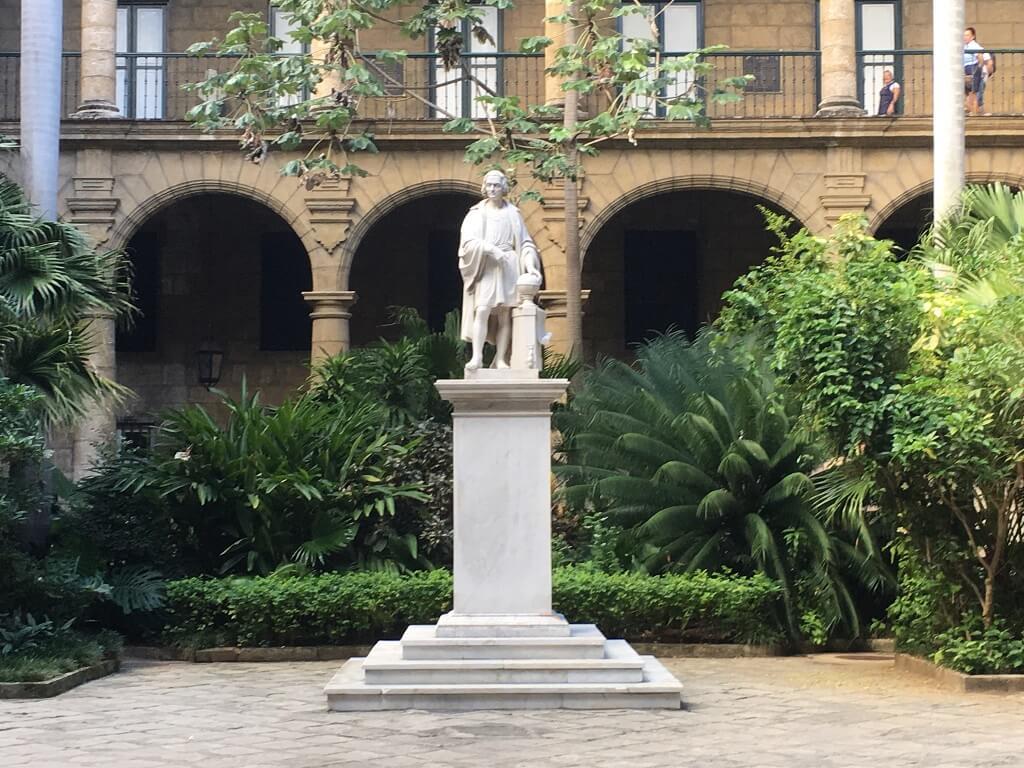
Palacio de los Capitanes Generales in leafy, compact Plaza de Armas is the former residence of the governors of Cuba.
The building sits on the eastern side of the Plaza and is today the home of the wonderful Museo de la Ciudad de La Habana (Museum of the City of Havana.)
This is where you go to see what life was life in colonial Havana. It houses a treasure trove of historical artifacts and many of the rooms are preserved just as they were in the 17th Century.
On the plaza’s western side is the Templete a structure imitating a small Greco-Roman temple. It was built in 1823 on the site of the first mass celebrated in Havana.
There is a ceiba tree in front of the temple. Every year, on the anniversary of Havana’s founding, many residents will walk around the tree three times which is believed to bring them luck for the coming year.
The public buildings in these historic plazas sit alongside architecturally stunning private homes.
Old Havana’s colonial streets offer a perfect opportunity for a self-guided walk. Not only is the area a UNESCO World Heritage site, it is perhaps the most iconic of Cuba’s tourist attractions. And yet, the area manages to retain its colonial charm.
*****
Trinidad and the Valley de los Ingenios
Year of inscription: 1988
Trinidad is a colonial town that’s famous for its historical city center and charming ambiance. The entire town and its surrounding area is a UNESCO World Heritage site.
The main attraction is its main square, Plaza Mayor, created in the neo-baroque style. Travelers head here to visit the Museo Romántico and Museo de Arquitectura to check out the area’s sugar history.
The town’s most stunning building is arguably the Iglesia de la Santísima, a 19th-century cathedral.
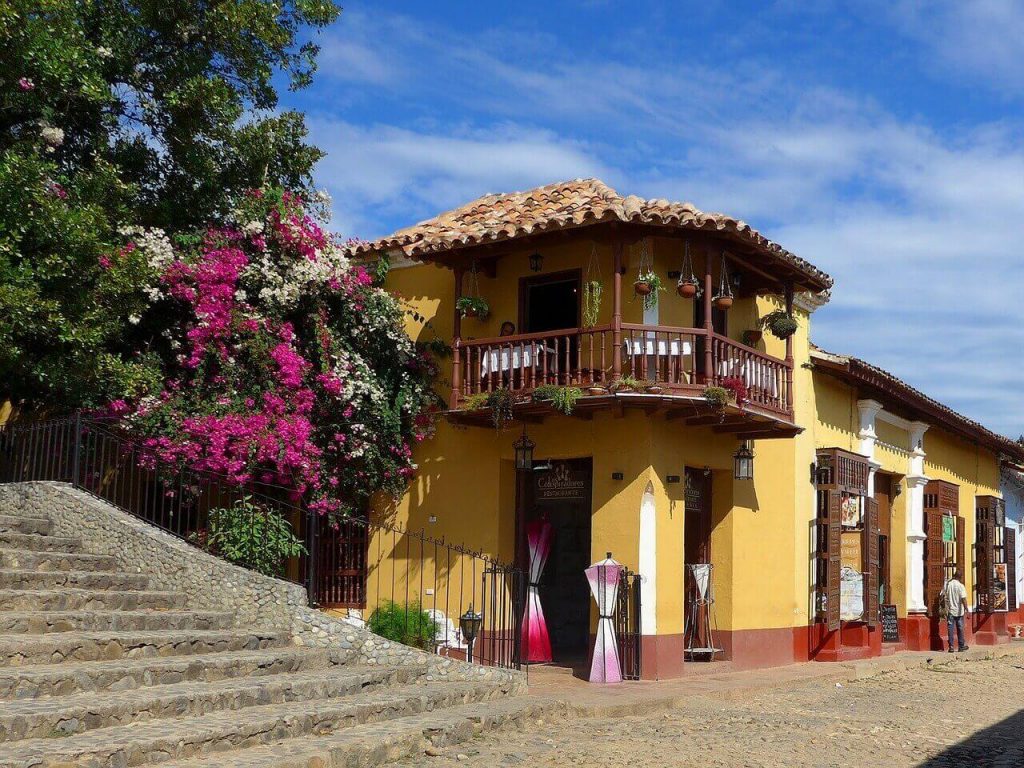
About 12 kilometers away from Trinidad sits the Valle de los Ingenios (Valley of the Sugar Mills), which is actually comprised of three valleys: Meyer, San Luis, and Santa Rosa.
This was the hub of Cuba’s sugar production in the 18th century and 19th century.
But Trinidad is not just about history, museums and Cuban culture. Nowadays Trinidad is most renowned for its music and party culture.
The town has a lively and vibrant nightlife and good restaurants serving traditional cuisine.
There are many open air music venues and exciting clubs including one in an underground cave. If you are looking for the best places to visit in Cuba, you ca’t miss Trinidad!
*****
San Pedro de la Roca Castle, Santiago de Cuba
Year of inscription: 1997
Another one of Cuba’s famous fortresses sits on the island’s eastern coast in Santiago de Cuba. Built in 1638, San Pedro de la Roca Castle protected Cuba from conquest in the 17th century and 18th century.
The fortress was constructed in response to England’s interest in the island and the heightened conflict between the two countries.
Some of the most fascinating, and real life, pirates of the Caribbean plied their trade in and around these waters. There is a small museum in the fortress that displays the history of the various pirates and their adventures and it is well worth a visit.
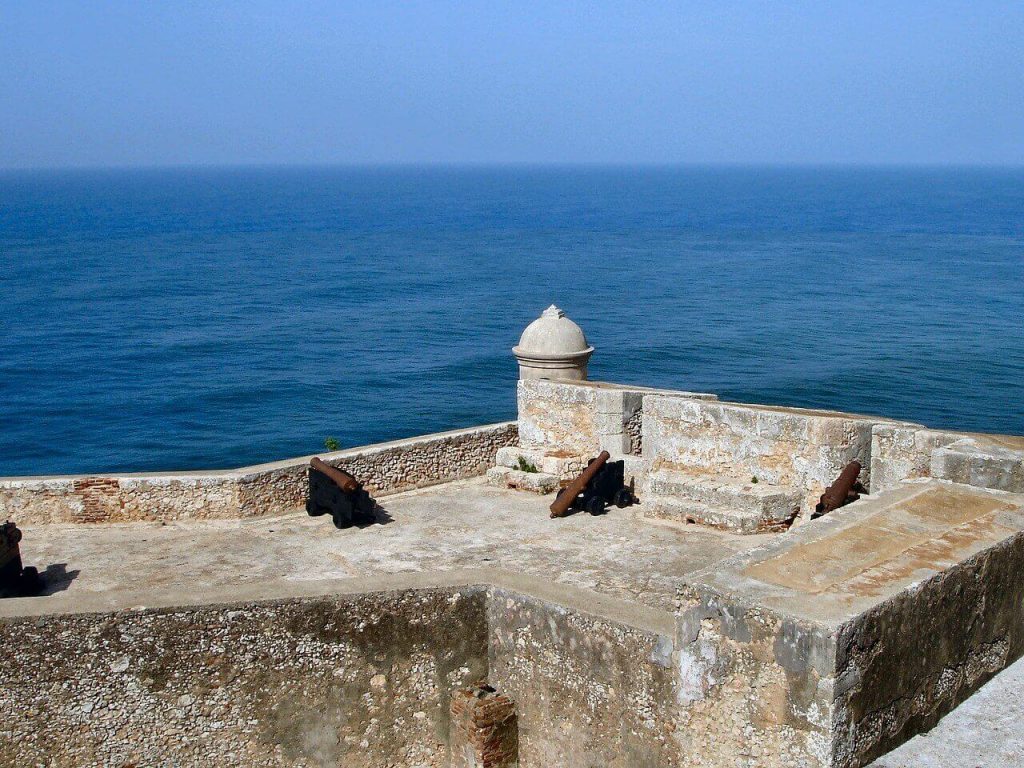
The fortification system is known for its symmetry and geometrical shape and was constructed in the Spanish-American military architectural style.
Designed by Juan Bautista (Giovanni Battista) Antonelli, San Pedro de la Roca is known for its complex network of staircases that wind up the side of the rocky coast.
*****
Urban Historic Center of Cienfuegos
Year of inscription: 2005
Many travelers stop in the town of Cienfuegos on their way to or from Trinidad. The first thing that strikes you when you enter Cienfuegos is the architecture.
Cienfuego’s colorful historic center, considered by many to be the most beautiful and best of Cuba, is flanked by neoclassical buildings and is the cultural hub for Cienfuegos.
Just some of its many architectural achievements include:
Arch of Triumph
Our Lady of the Immaculate Conception Cathedral
Parque de José Martí
Theatre Tomas Terry
The Botanical Garden of Cienfuegos
University of Cienfuegos
As early as the late 15 century, the town was inhabited by pirates. It was settled by French immigrants from Bordeaux and Louisiana in 1819 who raised both tobacco and cattle.
The town’s French heritage is evident in its graceful architecture, street names and the tombstones in its cemeteries.
Although the Cienfuegos town center and the surrounding countryside alone are worth several days exploration, three structures merit special mention: Fort Jagua, the Reina Cemetery and Palacio del Valle
Fort Jagua was built in 1742 by King Philip V of Spain to keep out the pirates. It lies to the south of the city on Cienfuegos Bay. You can take a ferry across the bay and visit the fort.
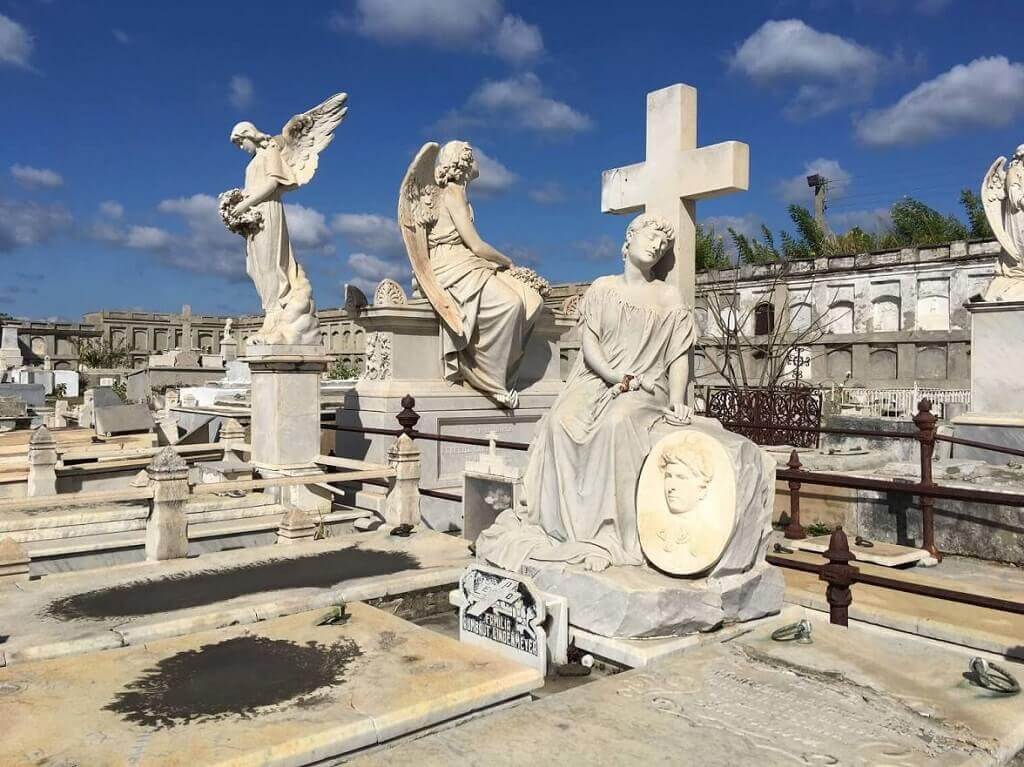
Cementerio La Reina. The funerary statuary in this cemetery is of an artistic level worthy of the finest cemeteries of the world.
The cemetery is on the outskirts of town and can be reached by a “bici-taxi” one of the more interesting modes of Cuban transportation.
There is a cemetery attendant at the gate who will happily tell you the fascinating stories behind the tombstones and mausoleums for a tip.
Palacio del Valle. A couple of miles from Cienfuegos (or a long walk along the Cienfuegos Bay promenade) is the incongruous but amazing Palacio del Valle.
This is a historic villa built from 1913 to 1917 in the Moorish style. The villa is flamboyant, elaborate, extravagant, ostentatious…call it what you will, it will hold your interest.
It sits on the waterfront complete with Spinx heads guarding the entrance and multi-colored stained glass decorating the windows.
This unlikely structure was built by an architecture aficionado who fell on hard times and was forced to sell his dream. Today it is an upscale hotel and restaurant. A must-see in Cuba.
Insider note: As obscure and remote as Cementerio La Reina is, I believe it is one of the most interesting places to visit in Cuba.
*****
Viñales Valley
Year of inscription: 1999
The Viñales Valley is a hiker’s paradise about 3 and a half hours west of Havana. This area has been known for its natural beauty and tobacco plantations since the 19th century.
It’s surrounded by “mogotes” plateaued mountains that are popular with rock climbers.
The valley itself is a karstic depression surrounded by the Sierra de los Órganos mountains.
Other popular activities include exploring the local caves, horseback riding, and checking out the local clubs and restaurants in the nearby town of Viñales.
The area is also known for its botanical gardens and farm-to-table eateries.
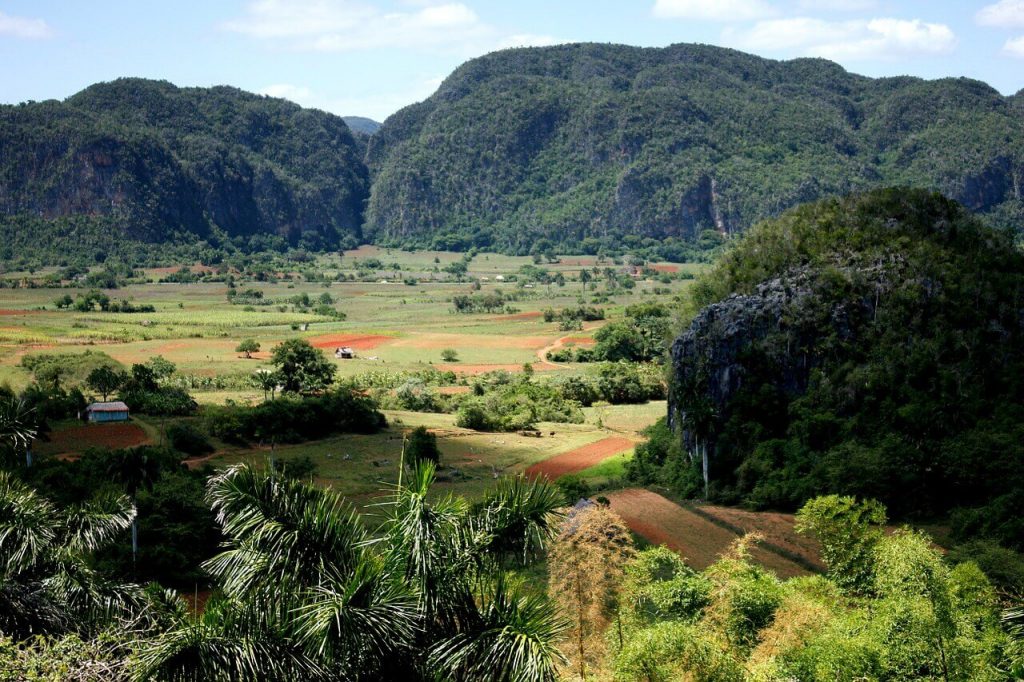
I would be remiss if I glossed over this little blurb about the Valley of Viñales without mentioning that, in my humble opinion, the landscape there is the most beautiful I have every seen anywhere.
If someone asks me what to see in Cuba, I say, the Valley of Viñales.
*****
Archaeological Landscape of the First Coffee Plantations in the South-East of Cuba
Year of inscription: 2000
Located in the foothills of the Sierra Maestra, the First Coffee Plantations in the Southeast of Cuba is an archaeological museum dedicated to educating visitors on the exploitation of enslaved Africans in Cuba in the 19th century and 20th century.
In addition to telling the stories of the hardship of these peoples, the museum also educates visitors on the development of the plantations by the French and Haitian plantation owners.
The area was home to 171 coffee plantations (otherwise known as cafetales), and visitors can still see the remnants of the intricate irrigation, hydraulic engineering, and water management systems — all built by enslaved engineers.
There was also a complex network of mountain roads and bridges that connected the plantations and offered entry and exit to other areas of the island.
*****
Historic Centre of Camagüey
Year of inscription: 2008
The newest of Cuba’s UNESCO World Heritage sites, the town of Camagüey and its historic centre was once the urban center of Inland Cuba and was an important hub for cattle breeding and sugar plantations.
Settled in 1528, Camagüey was isolated from trade routes but still managed to thrive.
It’s one of the few examples of Spanish colonies that utilized intricate urban planning techniques.
Visitors can still see the intricate pattern created by developers, including a system of town squares and winding streets that were developed in medieval Europe.
It is rumored that the intricate winding streets were laid out in that perplexing pattern in order to confuse invaders and pirates.
The city is also home to stunning neoclassical, Art Deco, and Art Nouveau architecture.
Today, the town’s social and cultural activities still revolve around the historic center, and visitors can take part in holiday gatherings, festivals, and experience the daily life of residents.
*****
Alejandro de Humboldt National Park
Year of inscription: 2001
One of two of the natural UNESCO heritage sites in Cuba, Alejandro de Humboldt National Park is a biosphere reserve, dubbed, “one of the most biologically diverse tropical ecosystems in an island setting anywhere on Earth.”
Wow! If that’s not an endorsement, I don’t know what it.
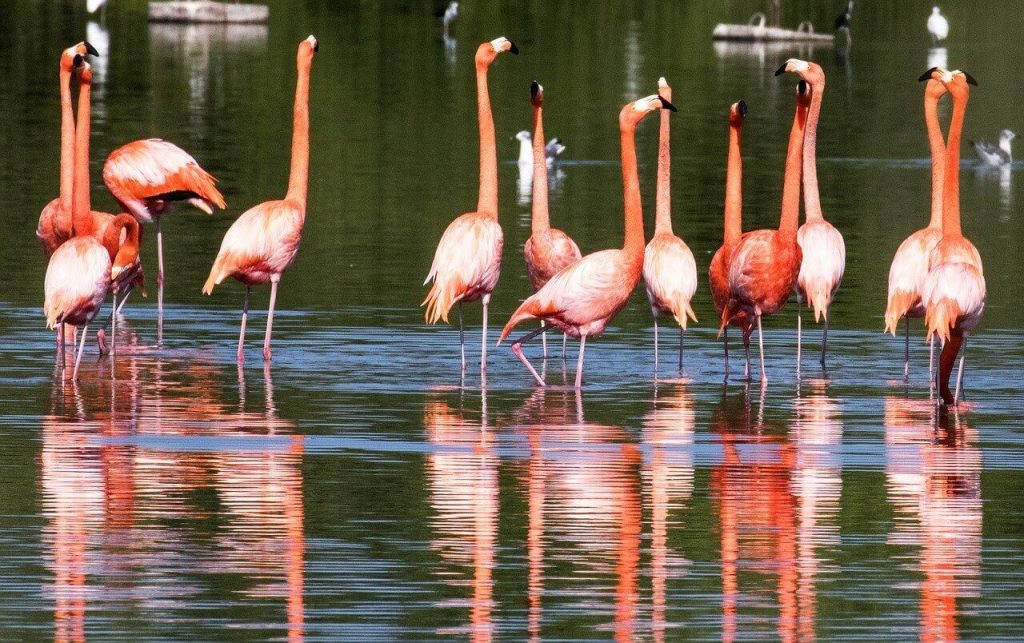
It’s home to 16 endemic plant species, 145 types of ferns, and the Cuban solenodon, an endangered species similar to a large mole.
It also features five different landscapes and hundreds of species of animals. It was named after Alexander von Humboldt, a German scientist famous for his work on botanical geography in Cuba in the early 19th century.
*****
Desembarco del Granma National Park
Year of inscription: 1999
Located on the south-westernmost tip of Cuba sits the Desembarco del Granma National Park, an explosion of Caribbean flora and fauna. One of the park’s most striking features is its raised marine terraces.
The park’s name translates to “Landing of the Granma.”
The Granma was the name of the yacht that Fidel Castro, Che Guevara, and Raúl Castro sailed to Cuba in 1956. The event is often cited as the start of the Cuban Revolution.
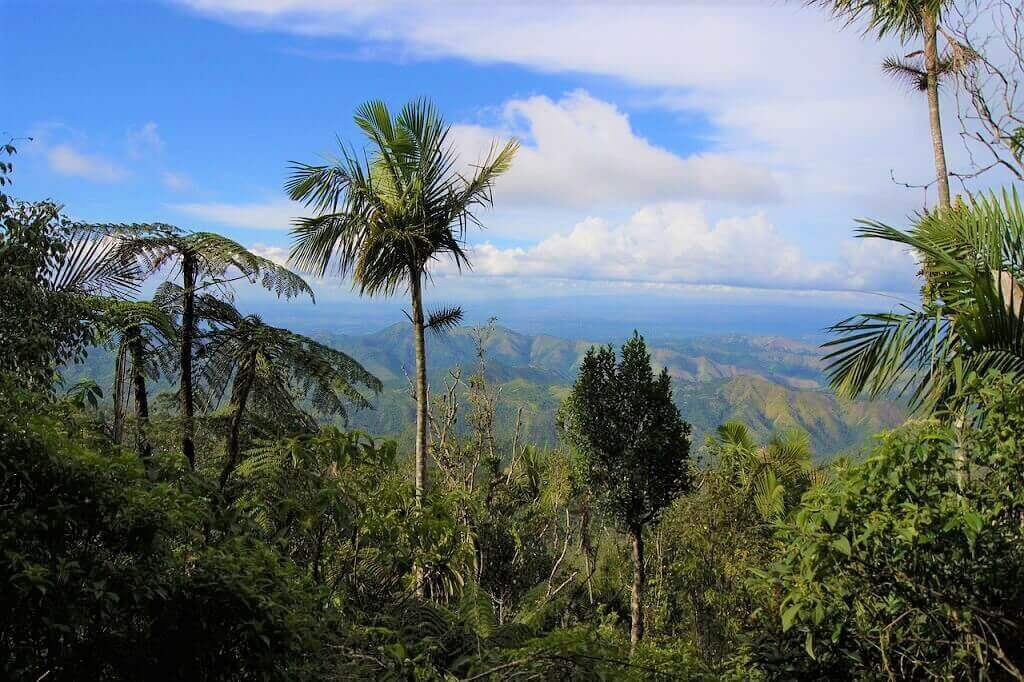
Today, visitors head to the park to enjoy its natural splendor. It’s home to the Toa River, which is Cuba’s largest river.
It’s often cited as one of the country’s most important bio diverse areas as it’s home to thousands of unique species that have survived years of climate change.
*****
Want to know more about how to explore Cuba and Cuban culture? Check out these reference guides.
What are your thoughts on Cuba UNESCO World Heritage sites? Which ones would you like to visit first? To see them all would take quite some time but you can certainly see most of them with this perfect Cuba itinerary.
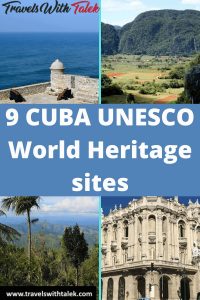
BTW, if you are getting ready for your trip, make sure to take advantage of these useful, money-saving links to book your trip:
- Research and book your flight with Skyscanner. I have found them to be the best because they list all airlines including the budget ones. You are always sure of having researched all options.
- For car rental around the world, Discover Cars has flexible pickup and drop-off options, I recommend Discover Cars.
- Book your accommodation with Booking.com. I find they have a wide selection and a nice, user-friendly, transparent website.
- Protect your trip and, more importantly, protect yourself with travel insurance. I use Travelinsurance.com and have been very happy with them.
- Looking for a small group tour to unforgettable destinations with top professionals? Intrepid Travel is your choice.
- For more general tours to any destination or attraction, book with Viator. Check them out.
- Need a visa? Get your visa for all countries with Passport Visa Express.
- Looking for a cool walking tour to explore a city? My favorite walking tours are offered by Take Walks.
- Food and drink tours are the best way to enjoy a city. And Devour Tours are my favorite.
- Looking for a good VPN to protect your security, privacy and freedom online while traveling? Nordvpn is your best option.
- The best and most economical way to stay connected while traveling is with an Airalo eSIM.
I personally use, and can recommend, all the companies listed here and elsewhere on my blog. By booking through these sites, the small commission we earn – at no cost to you – helps us maintain this site so we can continue to offer our readers valuable travel tips and advice.













